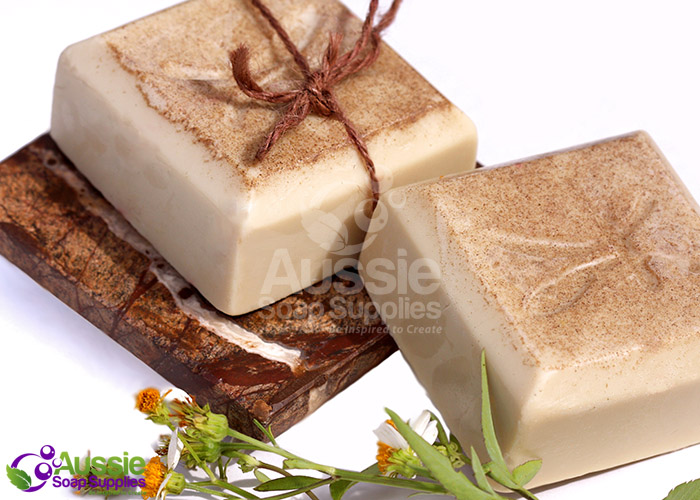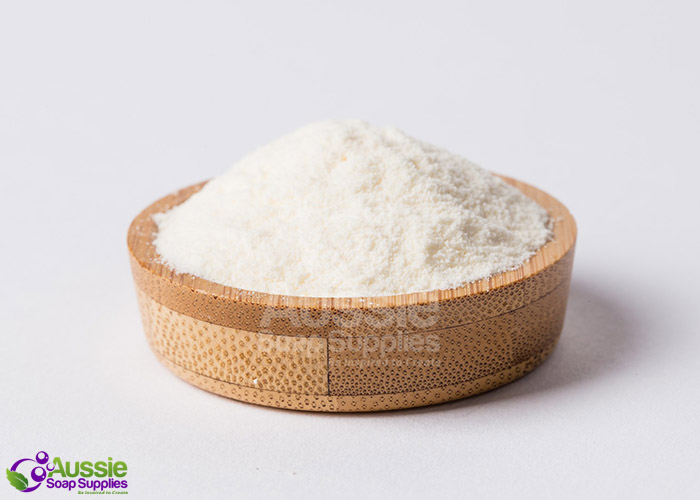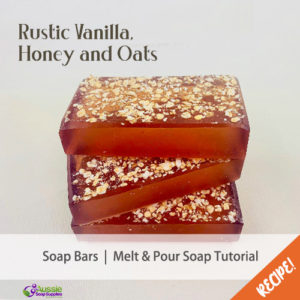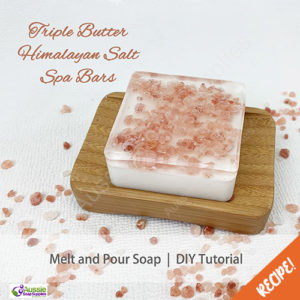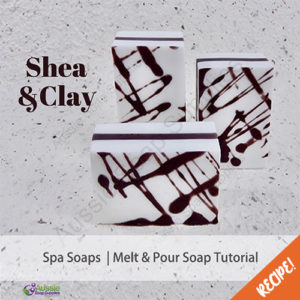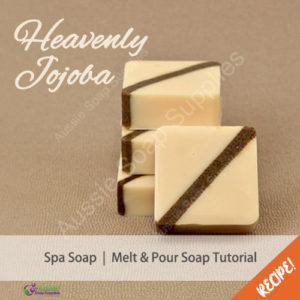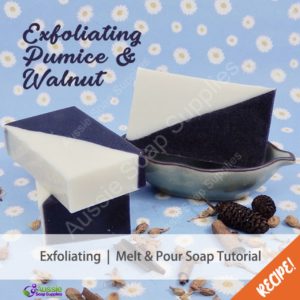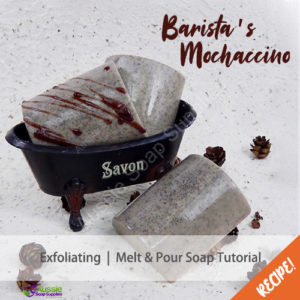Melt and Pour Soap is a blank canvas just waiting for you to be creative and add colour, fragrance and lots of additives! There are a few things that differ when choosing additives for Melt and Pour Soap as opposed to Cold Process Soap. The main thing to remember is that botanical materials need to be dried before adding to avoid them going mouldy. You need to hydrate them in fragrance, sodium lactate or liquid soap before adding, and then you are good to go!
Exfoliants
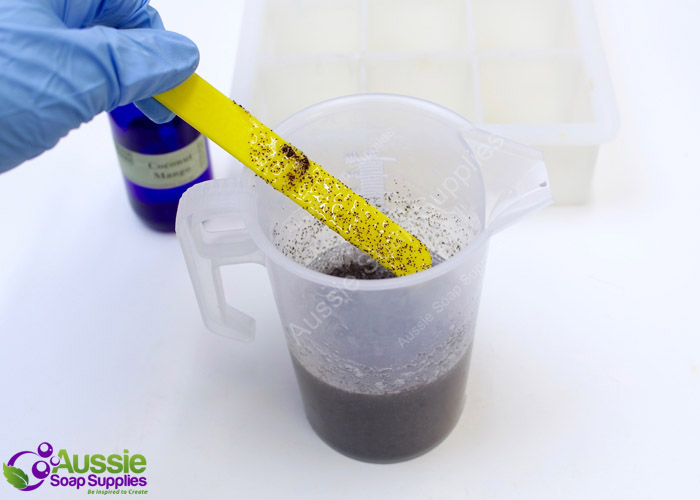
Less is usually more! Believe it or not, only a small amount of exfoliant is needed to slough away dry skin cells. If you are wanting a really scrubby soap, then go for it! Salt and sugar are not the best options for an exfoliant in soap. As soap is a moist environment, they will begin to dissolve or take on moisture and eventually become mouldy or make the soap soft and icky. Here are a few good well suited exfoliates to get you started:
- Ground Pumice Stone
- Loofah Slices
- Botanical Scrub Granules – Walnut Shell
- Botanical Scrub Granules – Coconut
- Botanical Scrub Granules – Apricot
- Botanical Scrub Granules – Olive
Clays
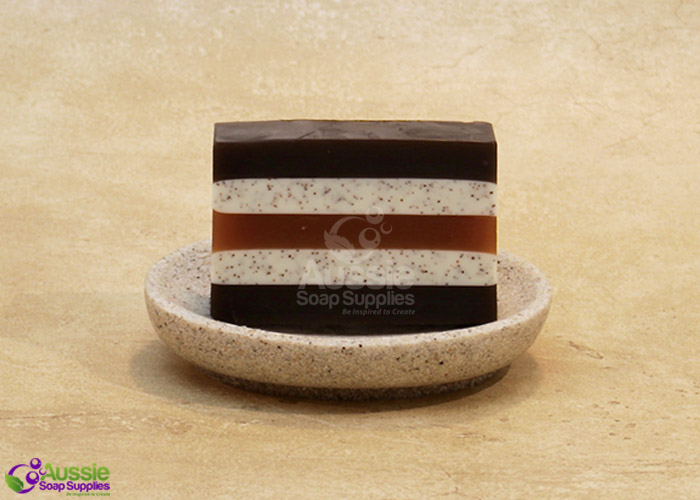
We have so many clays to choose from! Often used for their natural colours, they also have a light exfoliating effect as well as drawing out impurities.
- French Clays – Green, Pink, Yellow, White Kaolin
- Aussie Spa Minerals and Clays – White, Golden
- Rhassoul – absorbs lots of water – don’t discount water, best swirled through cold process soap
- Bentonite – great in shaving soap
- Brazilian Clays – Purple, Yellow, Pink, Green, Vanilla
- Mediterranean Clays – Caramel, Chocolate, Dusky Pink, Sea Clay
Other Powders
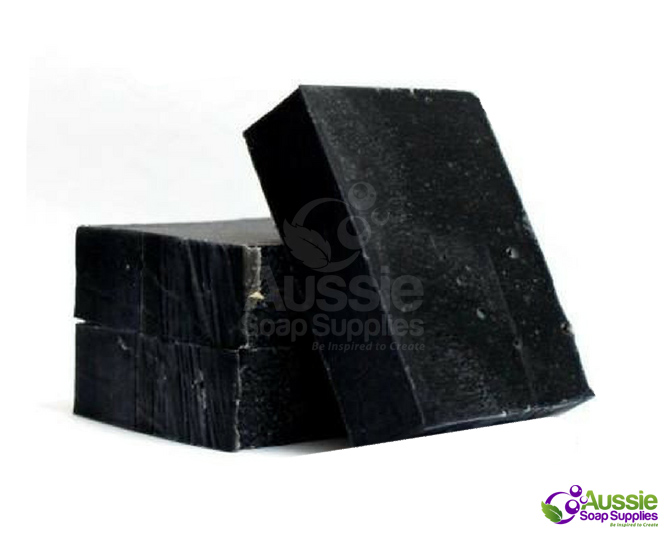
This topic is huge, and takes in many things included for use as an exfoliant or colourant too! The main thing is to ensure you moisten the powders (such as the Charcoal Powder in the graphic above) to avoid dry spots and clumps. You can use glycerine, sodium lactate, fragrance oil or herbal extracts.
Herbs and Fruits
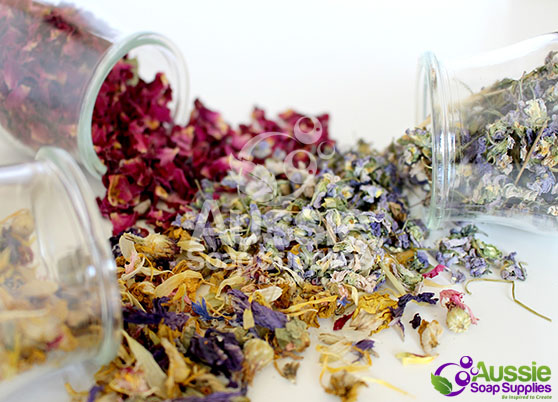
If you are interested in experimenting, make sure the botanical material is WELL DRIED and the pieces are very small or fine. Calendula petals look so nice in white soap and won’t cause you any problems with mould. If you add dried lavender petals, over time you’ll eventually get a ‘mouse poo’ effect as they will start to brown! For Melt and Pour Soap either add some dried botanicals on top of the bars so that most of the material is out of the soap, or use a coffee grinder to powder your home grown herbs and flowers. This will add a slight exfoliation, but you’ll certainly notice them in there. Here are a few to get you going:
- Dried Mints – spearmint and peppermint, others if you have them growing such as Eau de Cologne, Choc Mint etc
- Dried Parsley – for colour/texture
- Dried Calendula petals
- Dried Rosemary – grind it nice and fine or it is very scratchy
- Dried Dill
- Turmeric Powder
Milk Powders
We don’t tend to add powdered milks to Melt and Pour Soap as they can turn sour and that is not a pleasant washing experience! All our milk soap bases have the milks added during production thereby avoiding any issue with mouldiness.
Spices
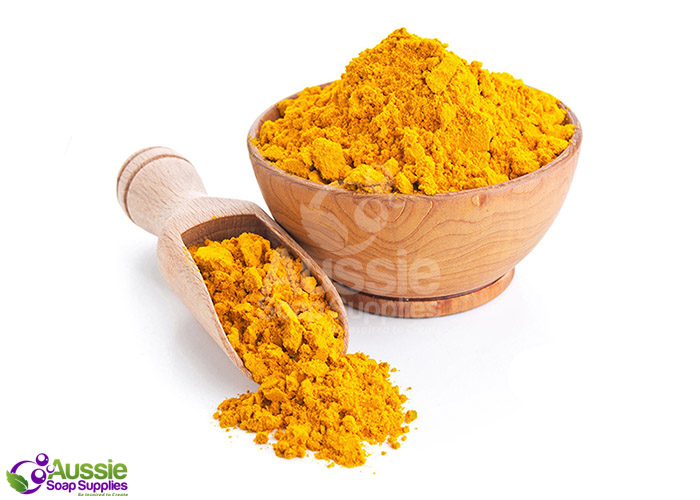
A word of warning. Many ingredients can be taken straight from the kitchen to the soap room, such as lovely oatmeal flakes. However, it is worth remembering that many spices, including cloves and cinnamon can cause sensitisation when used on the skin and should be used with caution. You can see on the main graphic the smallest sprinkling of cinnamon on the surface will wash away very quickly to reveal clean soap underneath.
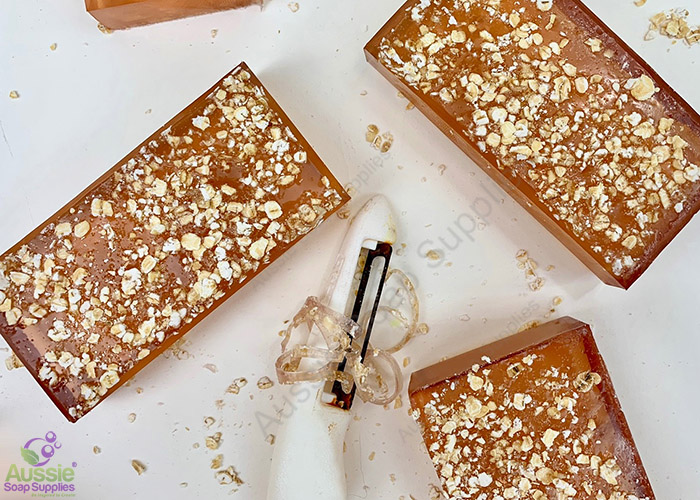
There’s always a lot of opportunities to use oats in bath and body products!
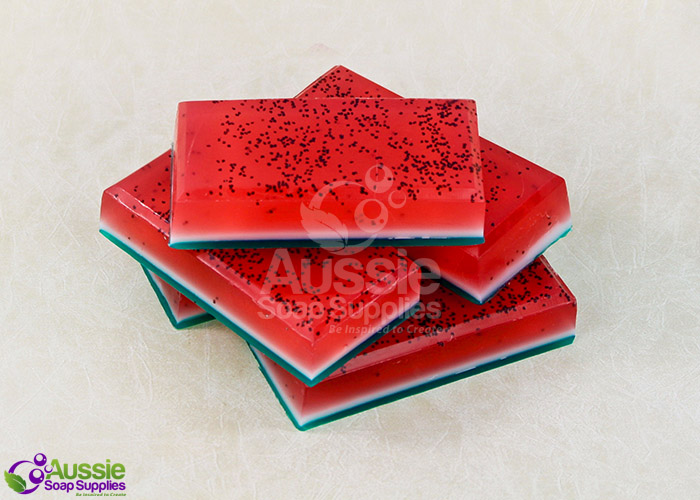
Poppy seeds give this soap a faux watermelon seed look – not too many though as they are quite exfoliating!
Tips for additives:
- Make sure the herbs you are adding are dry. Ensure herbs and botanicals are completely dry before adding or your soap will “slime” and then develop mould as the plant material decomposes. By adding dry herbs you will eliminate this issue. Finely chopped is best.
- As a general guide, we suggest approximately 1 tablespoon of exfoliant per 500g of soap base.
- When adding dry and powdery additives such as ground nuts, pumice, bamboo powder, oatmeal etc, remove a little hot soap and stir in well to eliminate any dry spots. Then incorporate back into the main portion of your soap mix before it cools. If you are a little slow and it starts to set, simply remelt together and incorporate well. You can also use the fragrance oil, glycerine or sodium lactate to moisten these.
- Clays are very powdery additives and should be added in the warmest soap, when it is at its most liquid. If you don’t disperse these properly, you will have dry pockets in the set soap. You can also use the fragrance oil, glycerine or sodium lactate to moisten these.
- With Ground or Shredded Loofah, and Jojoba Beads or clay beads, these can be added directly to the soap and gently stirred to incorporate – add these just prior to pouring as the soap begins to cool.
- With heavier, large particle additives such as clays, pumice, clay beads etc these can fall to the bottom of the soap. The soap will need to be gently stirred until the soap is a little cooler (and thicker and more syrupy). This keeps the particles suspended. When the soap reaches this syrupy consistency, it is time to pour. If you leave it a little too long, gently remelt and repeat this process.
Remember – Fresh is Not Best in Melt & Pour Soap!
If you are crafting Cold Process Soap you can safely include fresh milks, purees and juices; however this is not the case with Melt and Pour Soap.
These liquids will go off in the soap. It is not formulated to accept large amounts of liquids, fresh or not, so powdered additives or concentrates are always best.
You will always get slimy or mouldy soap if you add fresh rose petals, frangipani flowers and freshly picked herbs to your Melt and Pour Soap. That’s unfortunately the way it is. It is a moist environment and they are going to turn into compost!
Recipes and Projects from our FREE Recipe Formulary for you to try!
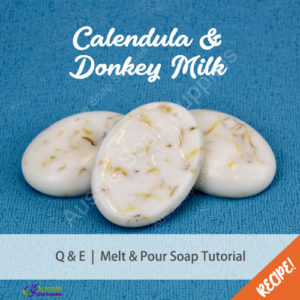
| |
